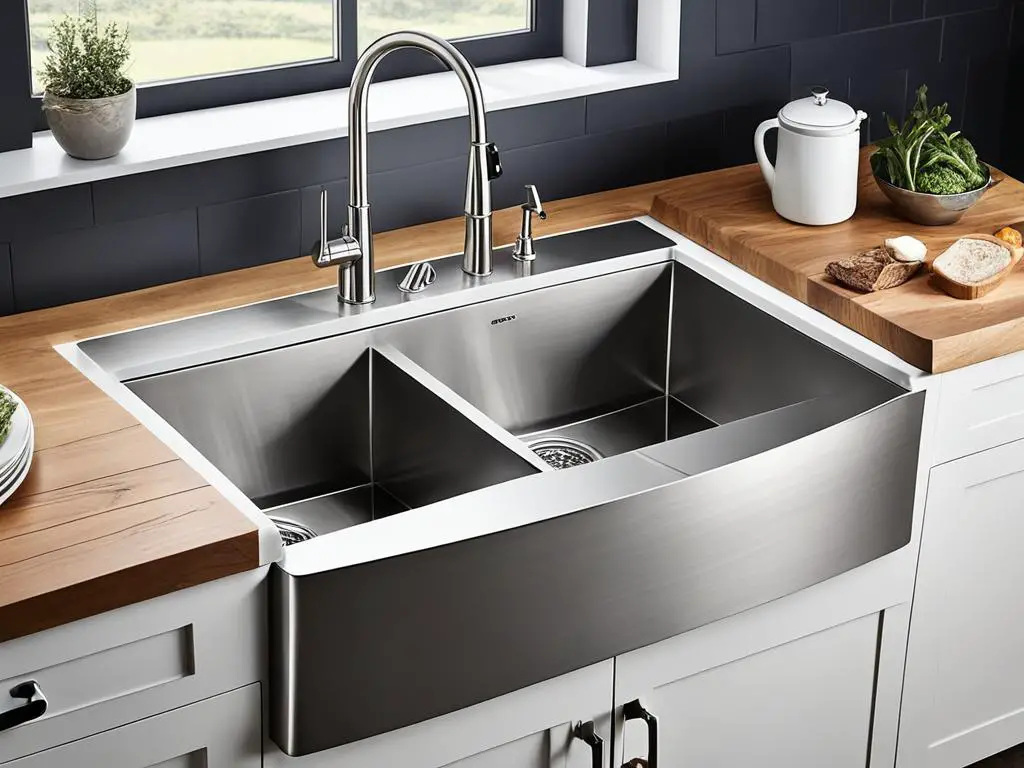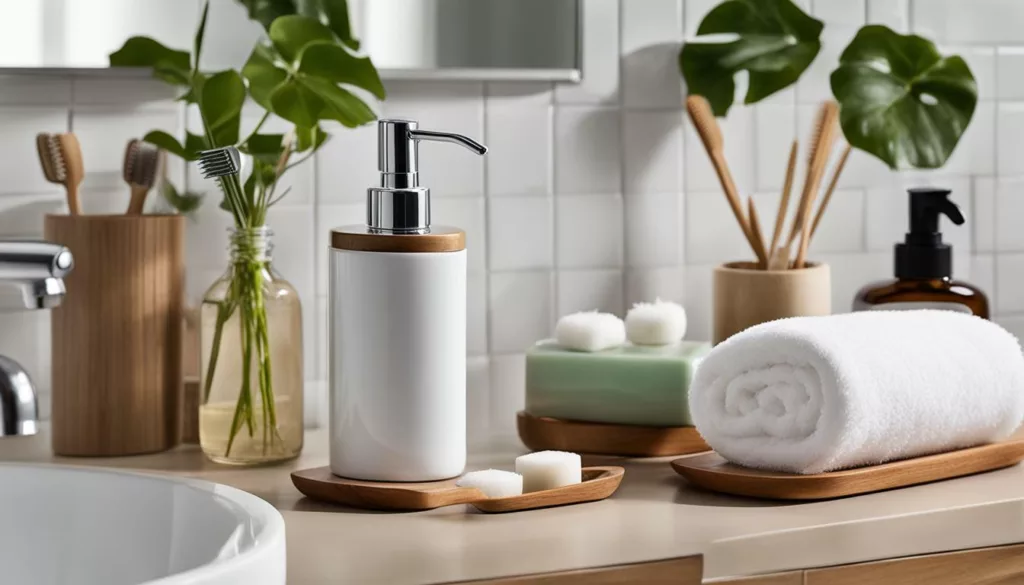
Apron Sink vs Farmhouse Sink
When it comes to selecting a sink for your kitchen, there are many options to choose from. Apron sinks and farmhouse sinks are two popular choices, but what sets them apart? In this article, we will delve into the key differences between Apron Sink vs Farmhouse Sink, helping you determine which one is best for your kitchen. Are you ready to explore the unique features of each sink? Let’s get started!
What is an Apron Sink?
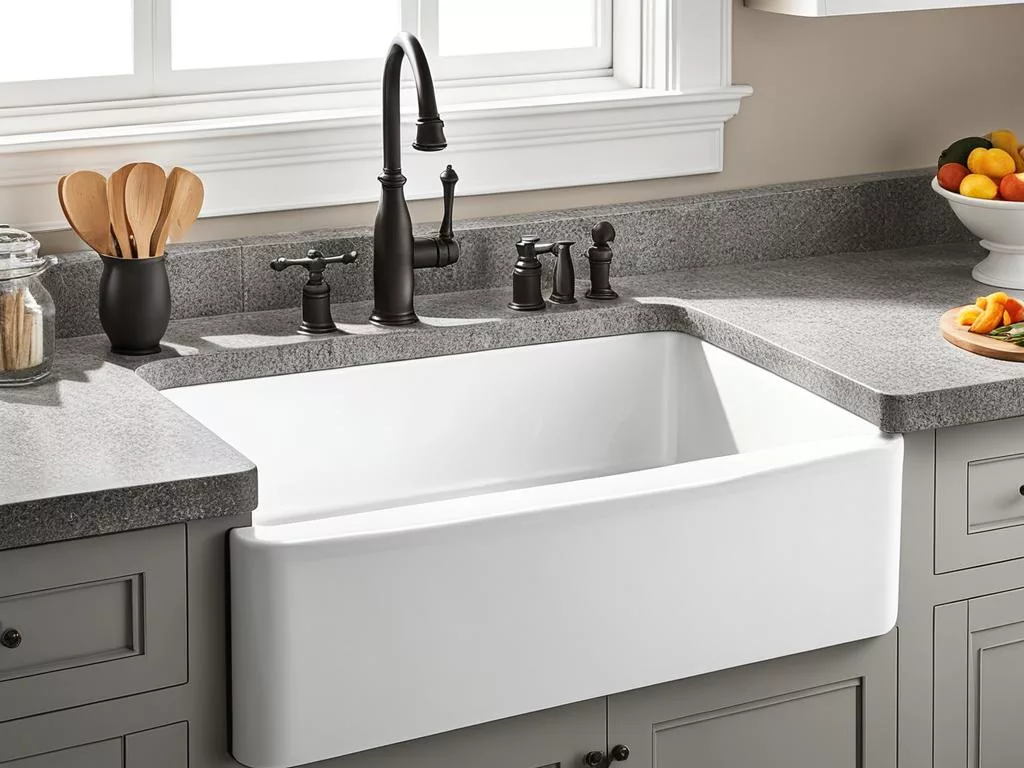
An apron sink, also known as a farmhouse sink, is a large, deep basin sink with an exposed front panel that juts out slightly from the countertop. This type of sink gets its name from its resemblance to the classic sinks found in rural farmhouses, although it has become increasingly popular in modern kitchen designs as well.
The most notable feature of an apron sink is its front panel, which extends down to the cabinet below the sink. This design detail helps to catch water and food debris and prevents it from spilling onto the floor, making it a practical choice for busy kitchens. Additionally, apron sinks offer a more ergonomic design, as they sit flush with the cabinets and countertops, reducing strain on your back and arms while washing dishes or prepping food.
Apron sinks are available in a variety of materials, including stainless steel, fireclay, cast iron, and copper. These sinks can also come in various sizes and depths, making it easy to find the perfect fit for your kitchen. Additionally, apron sinks come in several styles, from traditional to modern, ensuring that there’s an option for every kitchen design.
Advantages of Apron Sinks
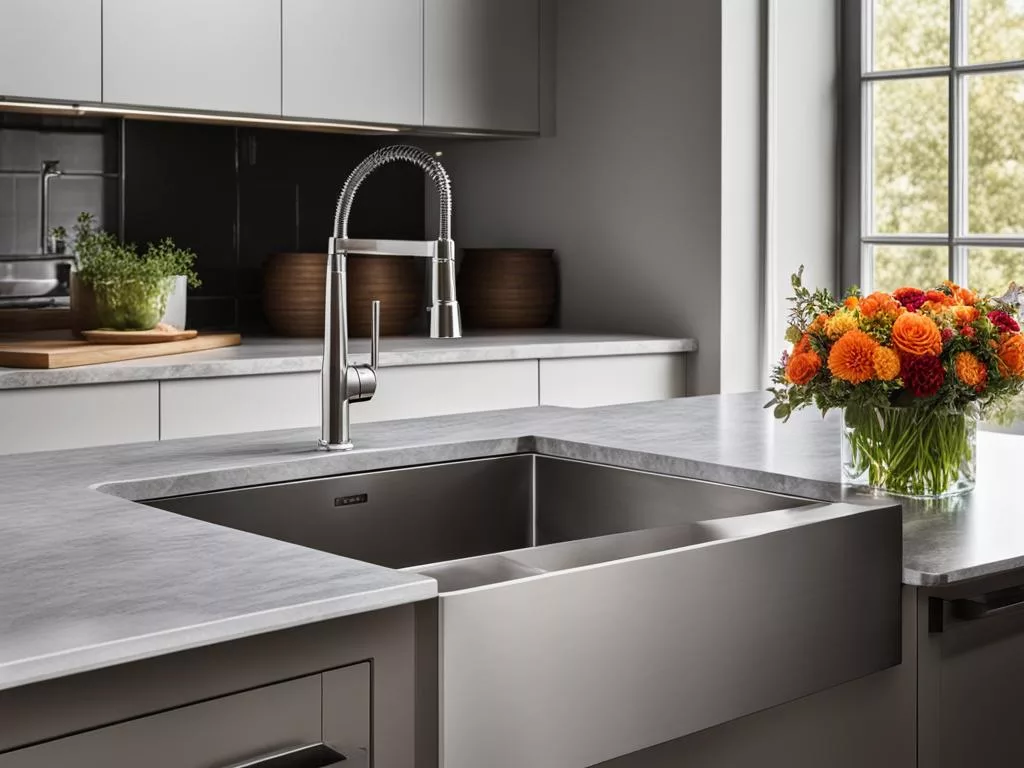
An apron sink can be a stylish and practical addition to your kitchen. Here are some advantages to consider:
| Advantage | Explanation |
|---|---|
| Increased sink depth | The deep basin allows you to wash large pots and pans with ease, without worrying about water splashing onto your countertops. |
| No countertop overhang | Unlike other types of sinks that sit below the countertop, the apron sink has no overhang, which eliminates any risk of water damage to your cabinet. |
| Enhanced kitchen design | The visible front panel of an apron sink adds a unique, classic look to your kitchen, making it a focal point and lending character to the space. |
| Easier to clean | The lack of a countertop overhang ensures that crumbs and other debris are easily wiped away from the sink. |
| Lower risk of back strain | Since apron sinks are installed in front of the counter, you can stand closer to the sink, reducing the risk of back strain and fatigue while washing dishes. |
If you’re looking for a sink that combines style and functionality, an apron sink may be the perfect choice for your kitchen.
Disadvantages of Apron Sinks

While apron sinks have many benefits, they also have some drawbacks to consider:
- Installation can be challenging: Due to their size and weight, apron sinks can be difficult to install. It’s important to have a professional plumber handle the installation to avoid any potential damage to the sink or surrounding countertops.
- Cost: Apron sinks tend to be more expensive than other types of sinks due to their unique design and high-quality materials.
- Apron sinks may not fit existing cabinetry: Because apron sinks are larger than traditional sinks, they may not fit in existing countertops or cabinetry. This can be a costly problem to solve if you need to replace your cabinetry or countertops to accommodate an apron sink.
- Keeping the sink clean: The exposed front of the apron sink can collect dirt and grime, making it necessary to clean the sink often to maintain its attractive appearance.
Overall, apron sinks can be an excellent addition to any kitchen. However, it’s important to consider both the advantages and disadvantages before making a final decision.
Apron Sink Design and Materials

If you’re considering installing an apron sink in your kitchen, you’ll want to find the perfect design and material to fit your needs.
Apron sink design can vary greatly, from sleek and modern to charming and rustic. You can find apron sinks in a range of sizes, shapes, and colors to match your kitchen décor.
Some of the most popular materials used for apron sinks include stainless steel, cast iron, and fireclay. Stainless steel is durable, easy to maintain, and offers a modern aesthetic. Cast iron is a classic choice that provides excellent durability and heat retention. Fireclay is known for its durability and farmhouse-inspired look.

Apron sink materials can also include composite granite, copper, and concrete. Composite granite offers excellent durability and comes in a range of colors to match your kitchen. Copper is a stylish option that naturally resists bacteria and requires minimal maintenance. Concrete offers a unique look that can be customized with different colors and finishes.
Consider the style and function of your kitchen when choosing an apron sink design and material. A sleek, stainless steel apron sink will complement a modern kitchen, while a classic, white fireclay sink will add charm to a farmhouse-style space. With a wide range of options available, you’re sure to find an apron sink that fits your unique preferences and needs.
Apron Sink Installation

Installing an apron sink requires some prep work to ensure a smooth process. You’ll need a suitable sink base cabinet that meets the sink’s size requirements. Before installation, confirm that you have the sink, mounting materials, silicone caulk, a notched trowel, and a measuring tape.
Begin by measuring the sink’s dimensions and cutting a hole in the countertop to match it. Then, position the sink in place and attach it to the cabinet using the mounting materials. Make sure the sink is level and aligned correctly with the countertop. Apply silicone caulk around the sink’s edges to seal it in place and prevent leaks.
Additionally, if your apron sink is made of heavy materials like cast iron, consider supporting it with additional framing underneath the sink for added security. Be sure to follow the manufacturer’s installation instructions for your specific sink model.
Apron Sink Styles
Whether you prefer a traditional, contemporary, or farmhouse-inspired kitchen, there’s an apron sink style to match.
| Style | Description |
|---|---|
| Traditional | Characterized by a classic, timeless look that’s reminiscent of vintage designs. The apron front typically has a smooth, exposed finish. |
| Contemporary | With bold, sleek lines, these apron sinks have a polished, modern appearance that suits minimalist and industrial-style kitchens. Apron front options may include mosaic or textured finishes. |
| Farmhouse-Inspired | Rustic and charming, these apron sinks borrow design elements from classic farmhouses. The exposed apron front often has a rough, distressed finish, and the sink may feature intricate detailing. |
Selecting an apron sink style that complements your kitchen’s design can enhance the overall aesthetic and functionality of the space. Image alt tag: examples of apron sink styles
What is a Farmhouse Sink?

If you’re considering a farmhouse sink, it’s essential to understand what sets it apart from other sink types. A farmhouse sink, also known as an apron sink, is a large, deep sink that has a noticeable front-facing panel or “apron.”
The design of the farmhouse sink dates back to the time when homes relied on wells for water. Typically, the sink was found inside the home and was used for tasks like cleaning up after meals or washing clothes. The large size and deep basin allowed for the completion of these tasks more efficiently.
Today, farmhouse sinks have become a popular choice for home kitchen renovations. They offer a unique, bold style that can add character and charm to any kitchen design. Their traditional, vintage-inspired look is trendy in rustic or country-style spaces.

One of the key differences between a farmhouse sink and other types of sinks is its large size. The deep basin and spacious design make it ideal for washing large pots, pans, and cooking trays, making it an excellent choice for home cooks and chefs alike.
If you’re looking for a statement piece that combines style and practicality, a farmhouse sink could be the perfect choice.
Advantages of Farmhouse Sinks
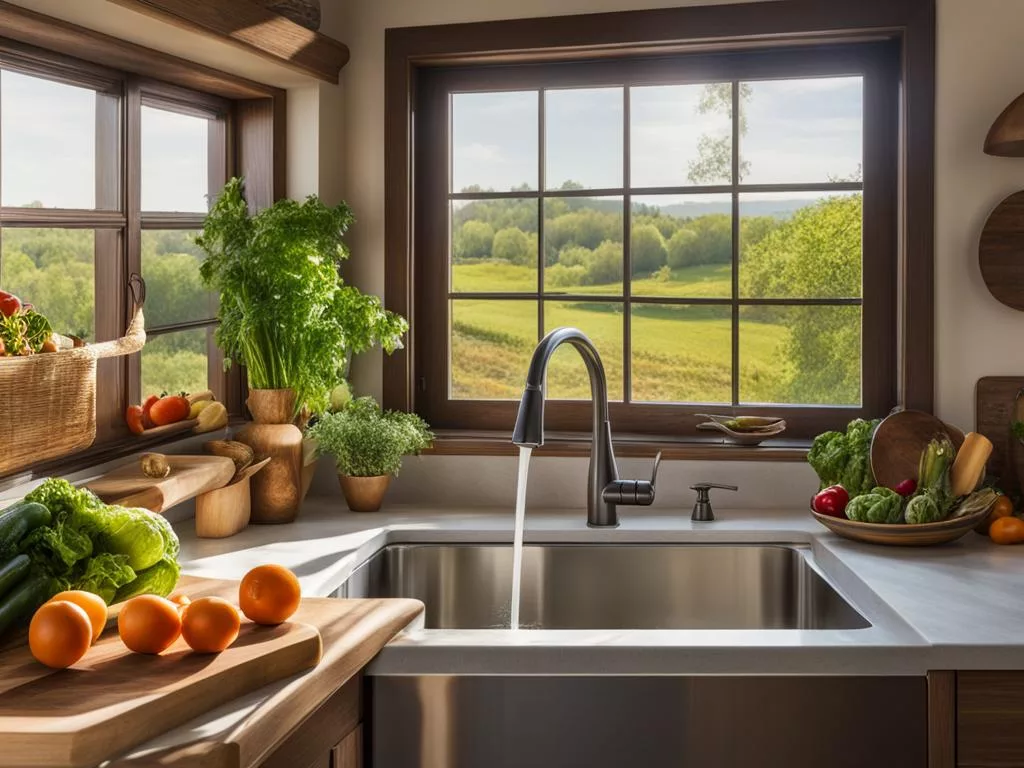
If you’re looking to make a statement in your kitchen, a farmhouse sink could be the perfect addition. Here are some advantages of having a farmhouse sink:
| Advantages | Details |
|---|---|
| Deep basin | Farmhouse sinks are deeper than standard sinks, providing plenty of space for washing large pots and pans. |
| Large size | The size of farmhouse sinks makes them great for food prep, washing dishes, and even bathing small pets. |
| Versatile functionality | Many farmhouse sinks come with additional features, such as built-in cutting boards or colanders that can make cooking and cleaning easier. |
Another bonus of farmhouse sinks is their rustic, charming look, which can add character and warmth to any kitchen. They come in a variety of colors and materials, including porcelain, fireclay, and stainless steel.
Overall, a farmhouse sink can add both style and functionality to your kitchen. If you’re looking for a sink that can handle heavy usage and looks great while doing it, consider a farmhouse sink.
Disadvantages of Farmhouse Sinks
As with any kitchen feature, farmhouse sinks have some potential downsides to consider before installing one in your home. Here are a few disadvantages to keep in mind:
| Disadvantages of Farmhouse Sinks | Explanation |
|---|---|
| Large size | The size of a farmhouse sink may be challenging to fit in a small kitchen because of its size. |
| Installation Difficulty | The installation process can be more complicated than installing other types of sinks, which can result in extra costs and require professional assistance. |
| Maintenance requirements | The upkeep of a farmhouse sink may be more demanding in comparison to regular sinks, as dirt and grime can accumulate in the grooves and crevices of the front apron. |
| Maintenance cost | The cost of maintenance can be higher when using a farmhouse sink, as cleaning supplies may be more expensive or frequent than with other types of sinks. |
Despite these potential disadvantages, many homeowners consider farmhouse sinks to be a worthwhile investment due to their stylish appearance and added functionality in the kitchen. Remember to weigh the pros and cons carefully and decide what sink type best suits your needs.

Farmhouse Sink Design and Materials
In addition to their large size and versatile functionality, farmhouse sinks are also popular for their wide range of design options and materials.
When it comes to design, farmhouse sinks are typically known for their traditional, rustic look, often featuring clean lines and simple shapes. However, modern variations can also be found, offering a sleek, contemporary aesthetic.
Materials commonly used for farmhouse sinks include:
| Material | Pros | Cons |
|---|---|---|
| Fireclay | Durable, stain-resistant, easy to maintain | Expensive |
| Cast Iron | Classic look, heat-resistant, available in various colors | Heavy, prone to chipping and rusting if not properly maintained |
| Stainless Steel | Durable, easy to clean, affordable | Can scratch easily, shows water spots and fingerprints |
Despite the material you choose, farmhouse sinks are an excellent choice for their elegant look and practicality.

Conclusion: Apron Sink vs Farmhouse Sink- Which Sink is Best?
After exploring the similarities and differences between Apron Sink vs Farmhouse Sink, you may still be wondering which one is the best fit for your kitchen. Ultimately, the decision comes down to your style and preferences.
Both Apron Sink vs Farmhouse Sink offer unique benefits and drawbacks. On one hand, apron sinks are known for their sleek, modern design and easy installation. On the other hand, farmhouse sinks offer a deep basin and versatile functionality that can accommodate larger pots and dishes.
One common similarity between Apron Sinks vs Farmhouse Sinks is their durability. Both sinks are typically made from high-quality materials that can withstand frequent use and last for many years.
Ultimately, the decision of which sink to choose will depend on your personal preferences and needs. Consider the overall style of your kitchen, your cooking habits, and the available space to find the sink that best fits your needs.
FAQ
What is an Apron Sink?
An apron sink, also known as a farmhouse sink, is a type of sink that features a large, exposed front panel that extends past the edge of the countertop. This unique design allows the sink to be installed at the front of the cabinet, creating a visual focal point in the kitchen.

What are the advantages of Apron Sinks?
Apron sinks have several advantages. They offer a larger and deeper basin compared to traditional sinks, making it easier to wash large pots and pans. The apron front design adds a touch of timeless elegance to any kitchen decor. Additionally, apron sinks are typically made of durable materials such as fireclay or stainless steel, ensuring long-lasting functionality.
What are the disadvantages of Apron Sinks?
Despite their many benefits, apron sinks have a few downsides to consider. The exposed front panel may require extra care and maintenance to keep it clean and free from scratches. Their larger size may also require modifications to the existing cabinetry during installation. Finally, the unique design may not be suitable or aesthetically pleasing in all kitchen styles.
What are the common similarities between Apron Sink vs Farmhouse Sinks?
Apron sinks are often referred to as farmhouse sinks because they share many characteristics. Both types of sinks have a large, exposed front panel that extends beyond the edge of the countertop, creating a visual focal point in the kitchen. They also offer a larger and deeper basin compared to traditional sinks, allowing for easier washing of large items.

What are the differences between the Apron Sink vs Farmhouse Sink in terms of design and materials?
In terms of design, apron sinks come in various styles ranging from traditional to contemporary, including farmhouse-inspired designs. Farmhouse sinks, on the other hand, are specifically designed to resemble the sinks found in traditional farmhouses. Both types of sinks are available in a range of materials such as fireclay, stainless steel, copper, and cast iron.
How are Apron Sinks and Farmhouse Sinks installed?
Both apron sinks and farmhouse sinks require professional installation due to their unique design and size. They need to be properly supported and secured to the cabinetry and countertop. The installation process involves removing the existing sink and making necessary adjustments to the cabinetry to accommodate the larger size and front panel of the sink.
What are the different styles available for Apron Sinks?
Apron sinks come in various styles to suit different kitchen aesthetics. Some common styles include classic farmhouses, modern farmhouses, and transitional designs. Each style has its unique features, such as decorative apron designs or sleek, minimalist designs, allowing homeowners to choose the one that best complements their kitchen decor.
What is a Farmhouse Sink?
A farmhouse sink, also known as an apron sink, is a type of sink that has a deep basin and an exposed front panel that extends beyond the edge of the countertop. It is designed to resemble the sinks found in traditional farmhouses, hence the name.

What are the advantages of Farmhouse Sinks?
Farmhouse sinks have several advantages. The deep basin provides ample space for washing large dishes and pots, making it ideal for busy kitchens. The exposed front panel adds a unique visual element to the kitchen and can be a focal point of the room. Farmhouse sinks are also available in a wide range of materials and finishes, allowing for customization to match any kitchen decor.
What are the disadvantages of Farmhouse Sinks?
While farmhouse sinks have many advantages, they also have a few disadvantages to consider. The larger size of farmhouse sinks may require modifications to the existing cabinetry during installation. The exposed front panel may be more prone to damage and scratches compared to traditional under-mount sinks. Additionally, farmhouse sinks may not be suitable for smaller kitchens with limited counter space.
What are the different design and material options for Farmhouse Sinks?
Farmhouse sinks are available in various design styles, including classic farmhouse, modern farmhouse, and transitional designs. They can be made from materials such as fireclay, stainless steel, copper, and cast iron. Each material offers its unique benefits in terms of durability and aesthetics, allowing homeowners to choose the option that best suits their needs and preferences.
Happy Learning
Also, Read,
How To Unclog A Kitchen Sink Effectively


